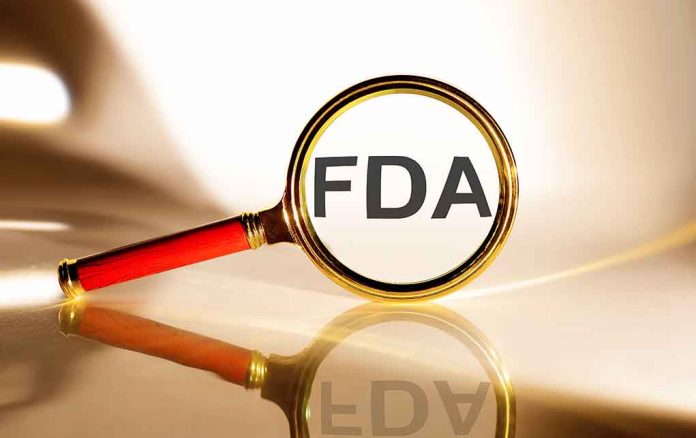
The FDA’s new “healthy” labeling standards promise a fresh approach to dietary guidelines but leave critical health and safety concerns unaddressed.
At a Glance
- The FDA revises criteria for labeling “healthy” foods, focusing on whole food categories.
- New standards include frozen and canned fruits and vegetables.
- Critics argue vital health risks from additives remain unaddressed.
- The FDA rules mandates compliance by 2028, sparking debate and criticism.
A New Approach to ‘Healthy’
The FDA has revamped its criteria for labeling food products as “healthy.” This shift focuses on whole foods, including fruits, vegetables, whole grains, dairy, eggs, beans, lentils, seafood, lean meat, nuts, and seeds, while imposing limits on added sugar, salt, and saturated fat. This updated framework aims to simplify nutrition labels and guide consumers in making better food choices by aligning with current dietary guidelines.
However, the new rule has drawn criticism for its lack of emphasis on significant health risks posed by chemical contaminants like pesticides and additives. The updated definition prioritizes nutrient content but lacks comprehensive measures to address the broader context of dietary health dangers, which raises questions about how well these regulations will impact national health outcomes.
What does "healthy" mean on food labels? The FDA has a new rule. https://t.co/E3mkzRNuVd via @nbcnews
— Erika Edwards (@erikaedwardsnbc) December 19, 2024
Changes and Omissions
The new regulations deviate significantly from the 1994 standards that highlighted negative nutrients such as calories, fat, and salt. Under the fresh guidelines, certain foods previously labeled as healthy, like fortified white bread and sweetened yogurts, are excluded, while more nutrient-dense options like nuts, seeds, and salmon receive recognition. This shift aims to reshuffle how consumers interpret “healthy” while encouraging manufacturers to produce better products.
“The updated definition should give consumers more confidence when they see the ‘healthy’ claim while grocery shopping. And hope it will motivate food manufacturers to develop new, healthier products that qualify to use the ‘healthy’ claim.” – Nancy Brown – Source
Despite these changes, the FDA’s guidelines have been accused of ignoring pressing health risks, such as the widespread use of chemical additives linked with hormone disruption and chronic diseases. The exclusion of such considerations keeps the focus primarily on traditional nutritional content rather than holistic dietary safety.
Making healthy dietary choices can help lower your risk of developing some health conditions as you age. Learn how the Nutrition Facts label can help older adults as they navigate their food options. https://t.co/QQ68twawP3 #OlderAmericansMonth pic.twitter.com/jqQQr0wTni
— U.S. FDA Human Foods Program (@FDAfood) May 18, 2023
Industry Implications and Public Concerns
The revised labeling standards are set to be enforced by 2028, giving manufacturers time to adjust their products. While intended to inspire healthier product development, the move has aroused significant debate, fueled by concerns over potential First Amendment violations and lobbying battles over food qualifications. Additionally, there’s an increasing perception that the FDA’s new guidelines primarily serve industry interests rather than genuinely addressing public health issues.
“The F.D.A. recognizes that diet-related diseases, including heart disease, cancer and diabetes, are the leading cause of disability and disease in the United States and contribute to America’s status of having the lowest life expectancy amongst large, high-income countries.” – Jim Jones – Source
More than 60% of grocery store products contain chemical additives that the new regulations do not adequately address. This lack of inclusion has fueled growing distrust towards the FDA, with criticisms claiming that the agency might prioritize corporate subsidies over public health protections.






















